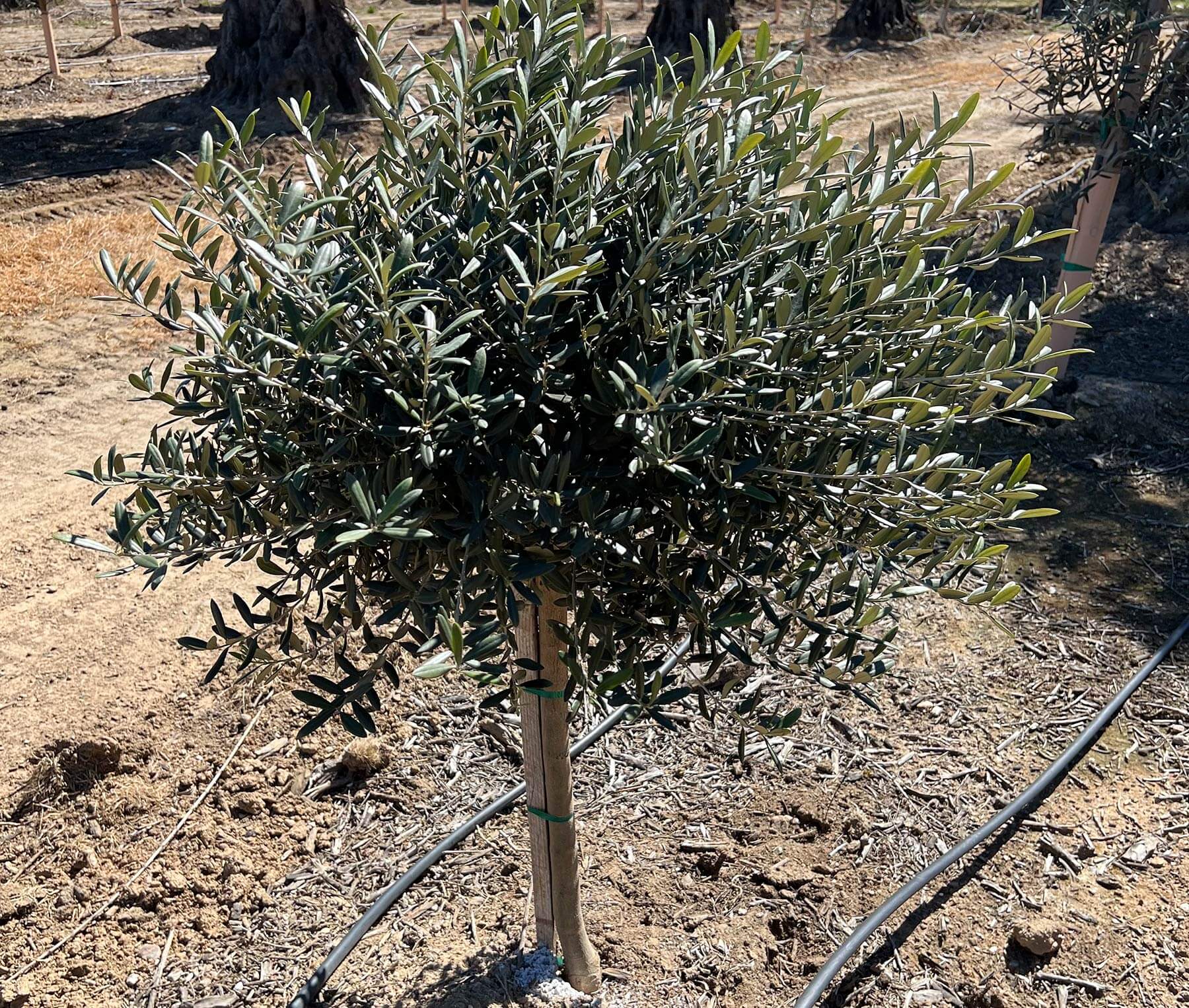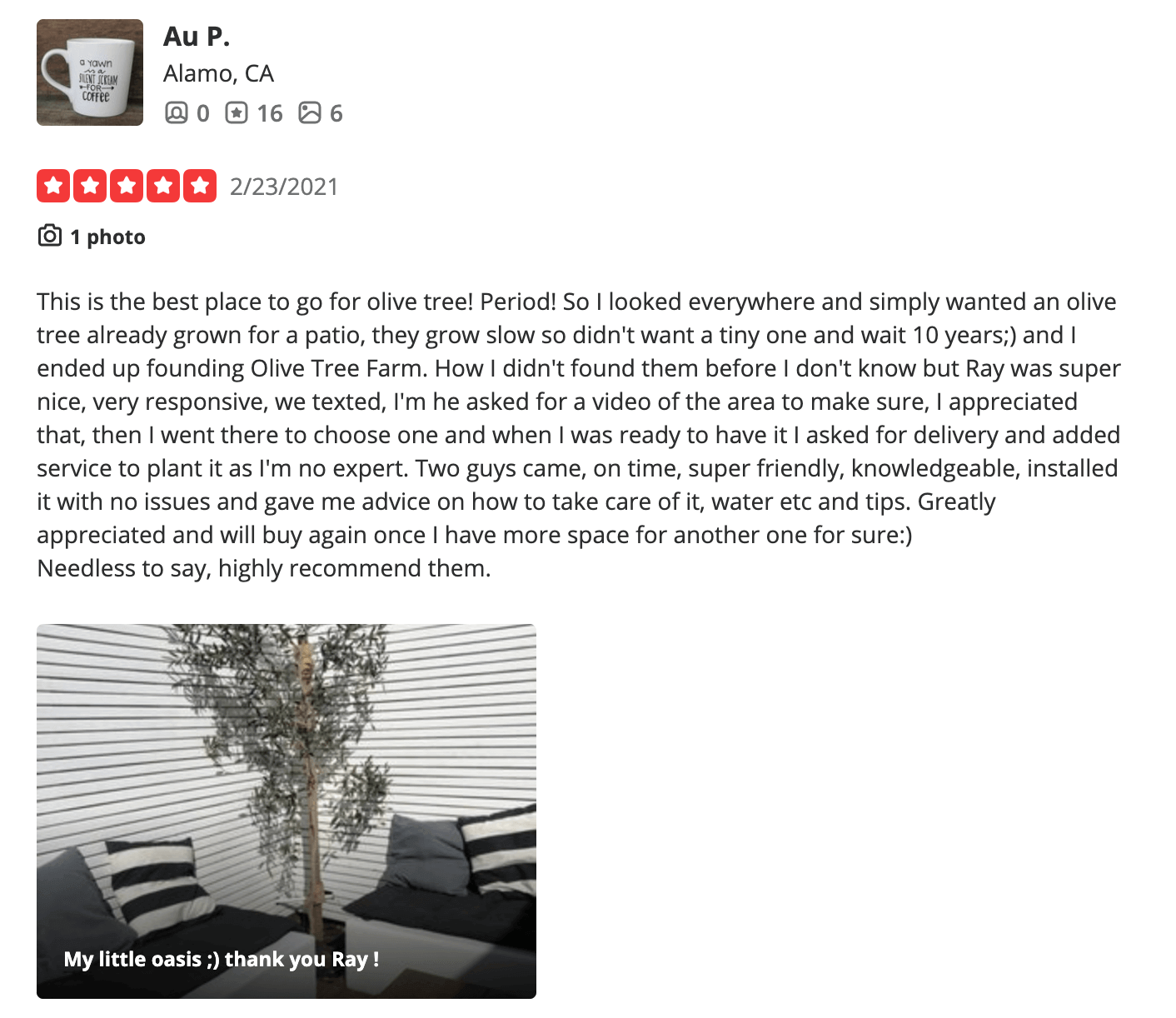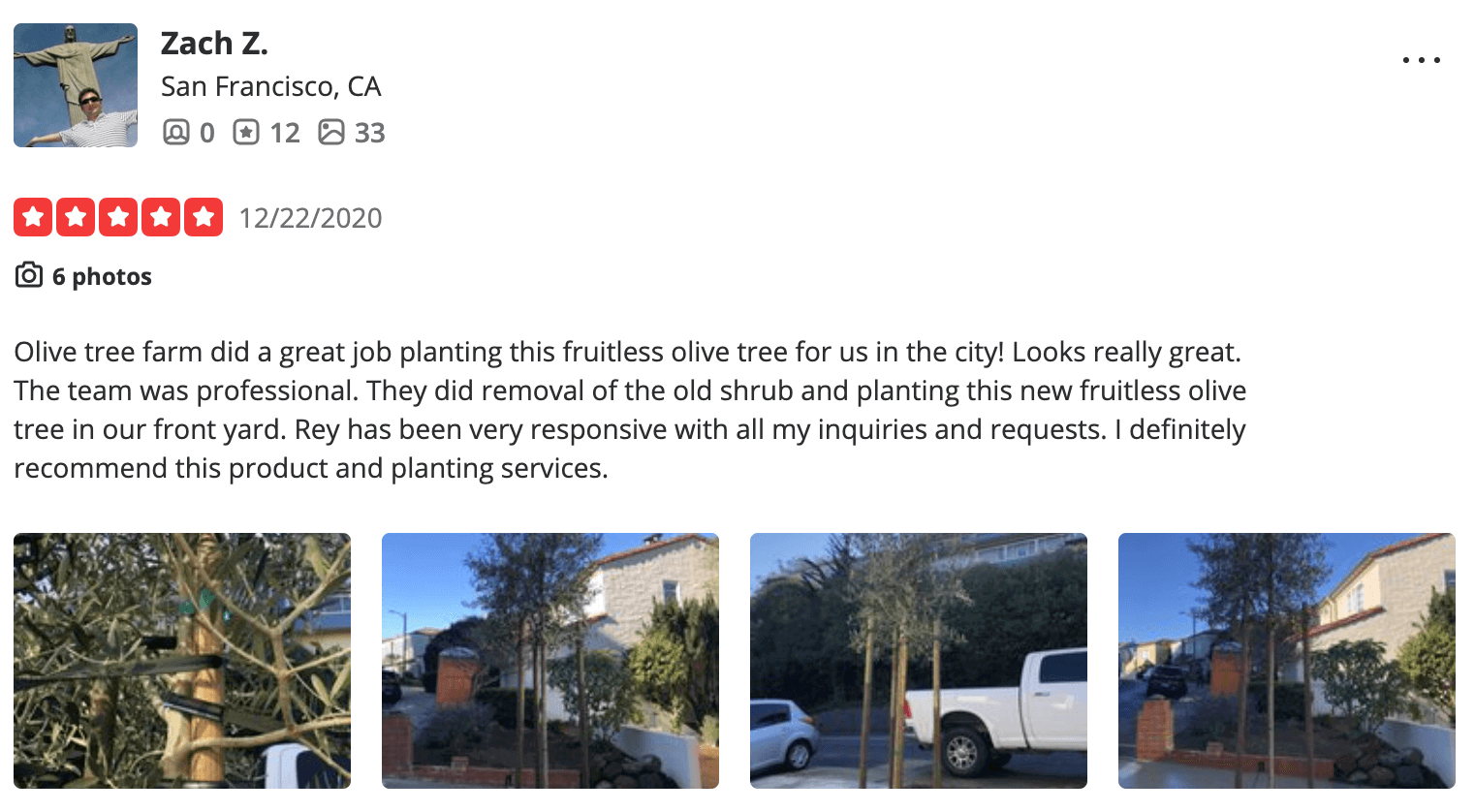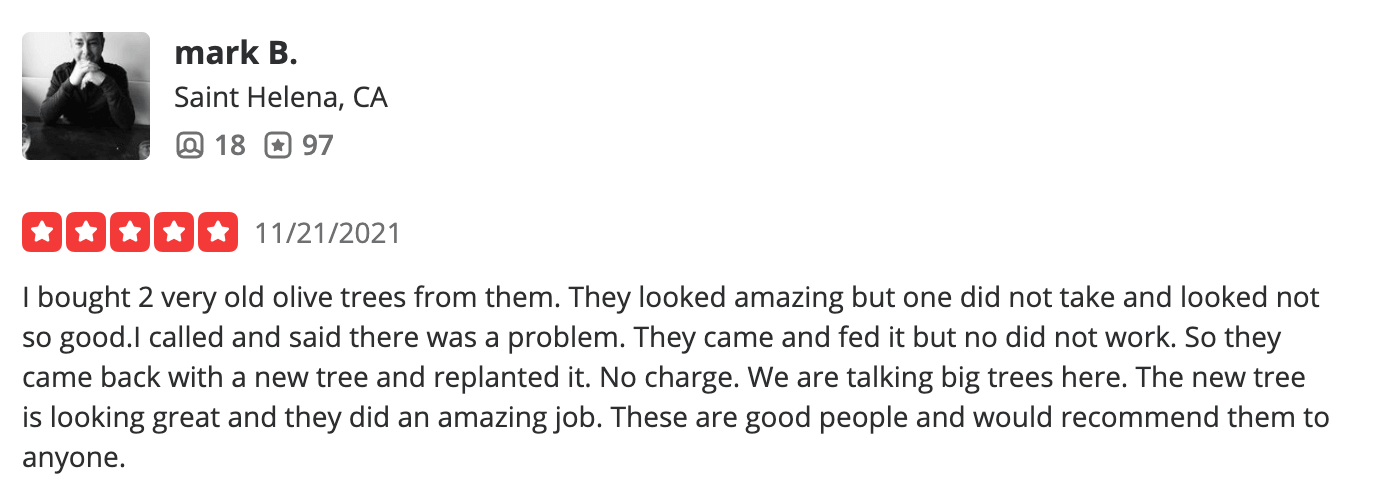Little Ollie Dwarf Olive Trees

Love olive trees but don’t have the space for a majestic 30-foot tree and its wide-spreading branches? What if you could get it in a smaller size?
These fruitless dwarf olive trees could be the perfect shrubs for you. With no fruit to make a mess and a diminutive size, these plants are perfect for lining a walkway or as container plants flanking an entry. Plus, they don’t reach towering heights or branch out to take up half your yard.
Check out everything you need to know about the dwarf olive tree here!
Size
Though it is called a tree, the dwarf olive tree is the size of a shrub. On average, they grow to about 2 – 4 feet, though some can reach around 8 – 10 feet. How often you prune and shape the tree will affect its mature size.
Dwarf olive trees are actually regular olive trees that have been grafted onto smaller rootstock. This creates a more diminutive version of the same gorgeous olive trees you already love.
Growth
Like regular olive trees, dwarf olive trees grow at a moderate rate. Because of their smaller size, it only takes a few years to reach maturity. A slower growth rate is often preferred among bushes of this type because you don’t have to prune as often.
Dwarf olive trees naturally have a compact, somewhat rounded shape. You can take advantage of this further by pruning and encouraging the plant to maintain its shape. These trees are often seen in topiary gardens because they are so easy to train.
Foliage
Olive trees have small oval-shaped leaves that are pointed on both ends. The tops are a lovely green color, while the bottoms of the leaves have a silvery sheen. The unique splash of color is perfect for adding a bit of variety to an overly green landscape.
Blooming
In the spring, dwarf olive trees burst forth with a bunch of small, white blooms. However, fruitless varieties don’t produce perfect flowers, meaning they are incapable of bearing fruit.
For those who are not interested in constantly cleaning up the mess left by fruit dropping on the ground, these trees are amazing!
Furthermore, fruitless trees produce less than 1% of the pollen produced by a fruit-bearing olive tree. For this reason, you can plant them even in areas where pollen-producing varieties of olive trees have been banned for allergen reasons.
Drought
During the first few months after planting, your dwarf olive tree will require regular, deep watering. However, after the tree has been established, a frequent watering schedule is not necessary. Olive trees love hot climates and are very resistant to drought.
Light
As a hot weather plant, dwarf olive trees love the sunshine. They flourish in full sun where other plants might start to wither.
Climate
In addition to lots of sunshine, dwarf olive trees prefer a warm home. They are rated for USDA climate zones 8 – 11.
They can tolerate cold snaps down to about 20 – 30 degrees Fahrenheit and can withstand a small amount of frost. If it gets much colder than that or stays that cold for an extended period of time, the olive trees will struggle.
Soil Needs
When it comes to soil needs, olive trees aren’t picky. They can grow in all types of soil, from light sandy soil to heavy soil with a lot of clay. The pH doesn’t matter much to them either, and they can grow in acidic, neutral, and basic soils. These trees can even flourish in nutritionally-poor soil.
Because of their flexibility, they are easy plants to add to your landscaping. Little maintenance is required (other than regular watering for the first few months), and most trees will happily take root. These are not delicate plants that you have to fret over constantly to ensure they can establish themselves.
The main thing is to ensure that the soil drains well. These trees can start to rot easily if they are left in pools of water or spend a lot of time in waterlogged soil.
Be careful about using organic matter or even native soil in containers with these plants. These soils can compact too much. A lightweight potting soil with good drainage is a better choice.
Water Needs
For the first 6 months or so after planting, you need to carefully monitor how much water your dwarf olive tree is receiving. Both underwatering and overwatering can cause the plant to start dropping leaves. Unfortunately, once they start to fall, it is difficult for the plant to recuperate, so keep a close eye out.
Once the plant has been established, frequent watering is not necessary. These trees are fairly drought-resistant. However, it’s still a good idea to check your tree occasionally to make sure it is getting what it needs.
Care and Maintenance
Once olive trees are established, they are a very low-maintenance plant. All they need on a regular basis is weekly watering (more for container plants).
Once a year, you can feed a general-purpose fertilizer before new growth begins in the spring. Prune once a year in the winter to help the plant keep its desired shape and trim away dead pieces or branches that cross one another.
If you notice pests like aphids and thrips bothering your tree, rinse them off with a hose or treat your tree with insecticidal soap. Diatomaceous earth works to rid the tree of ants and spider mites. Neem oil is great for scale insects.
Loving Your Dwarf Olive Tree
Dwarf olive trees are a fantastic addition to any landscape. They work great as container plants for patios, porches, or focal pieces in your yard. Plus, with no fruit to make a mess, infrequent watering, and minimal maintenance, these trees are a dream to care for once established.
Get yours today!
Don’t Take Our Word, Hear What Our Customers Say!



Interested? We’d love to hear from you!
Call us at 707-732-6152 for a free consultation!
Looking for something else? We might have it for you...
Arbequina Olive Trees
Arbosana Olive Trees
Ascolana Tenera Olive Trees
Cerignola Olive Trees
Coratina Olive Trees
Itrana Olive Trees Kalamata Olive Trees
Koroneiki Olive Trees
Leccino Olive Trees
Little Ollie Dwarf Olive Trees
Majestic Beauty Olive Trees
Manzanillo Olive Tree
Maurino Olive Tree Mission Olive Tree
Pendolino Olive Trees
Picholine Du Gard Olive Trees
Picual Olive Trees
Sevillano Olive Trees
Swan Hill Olive Trees
Wilsonii Olive Trees
Zitoun Olive Trees